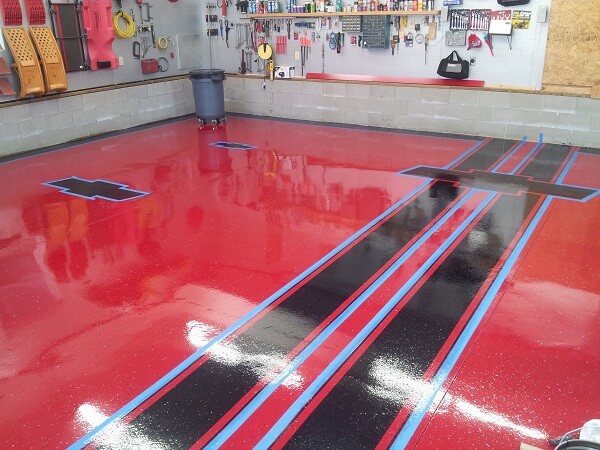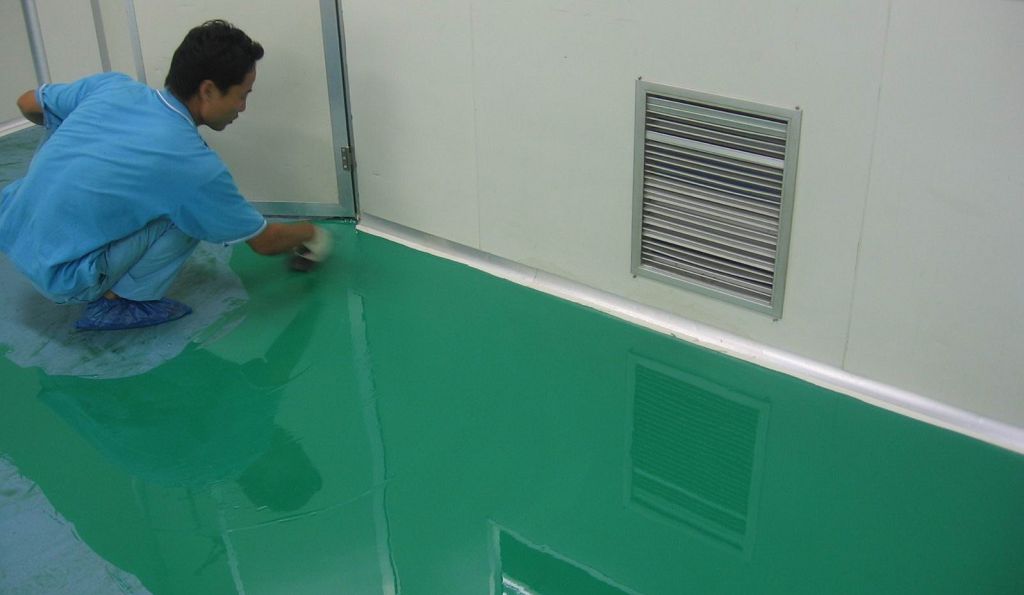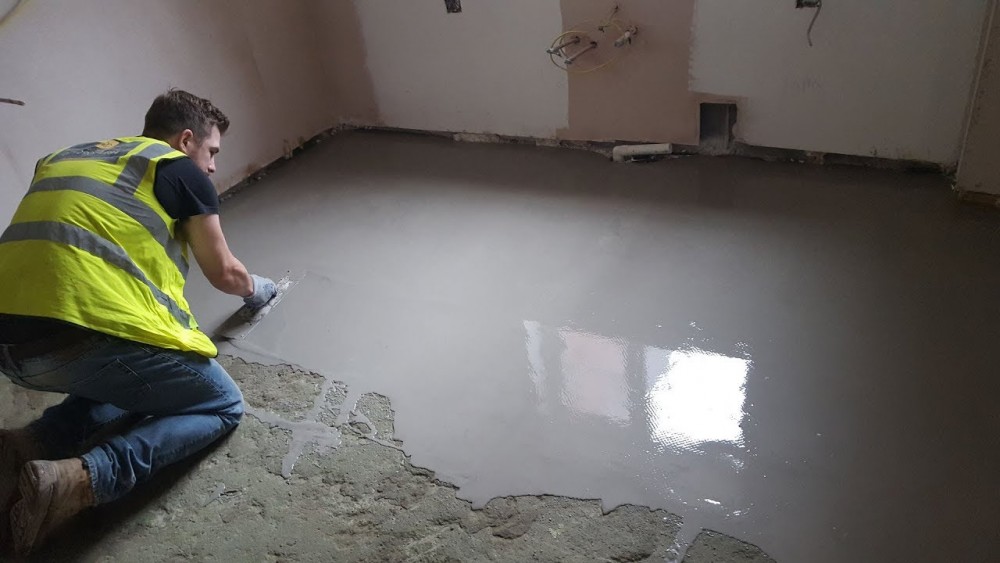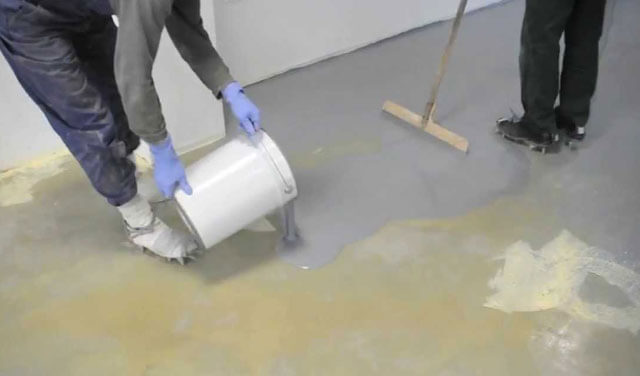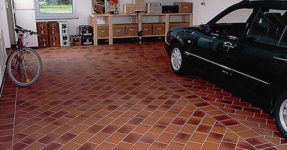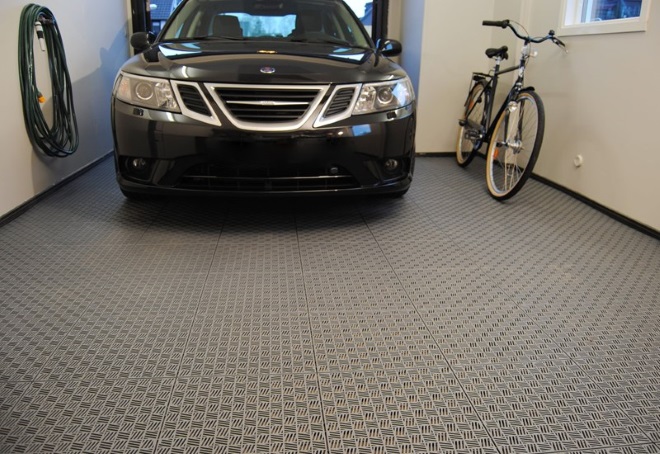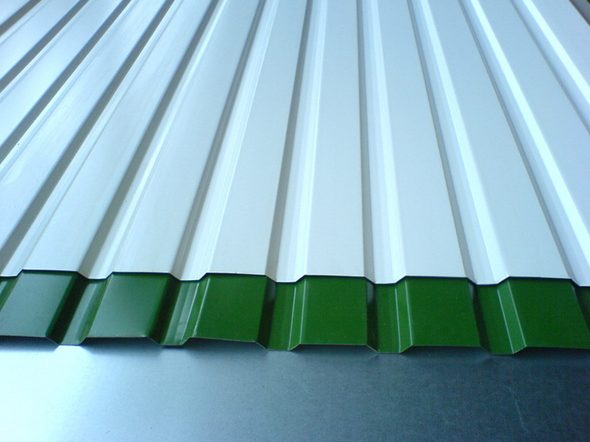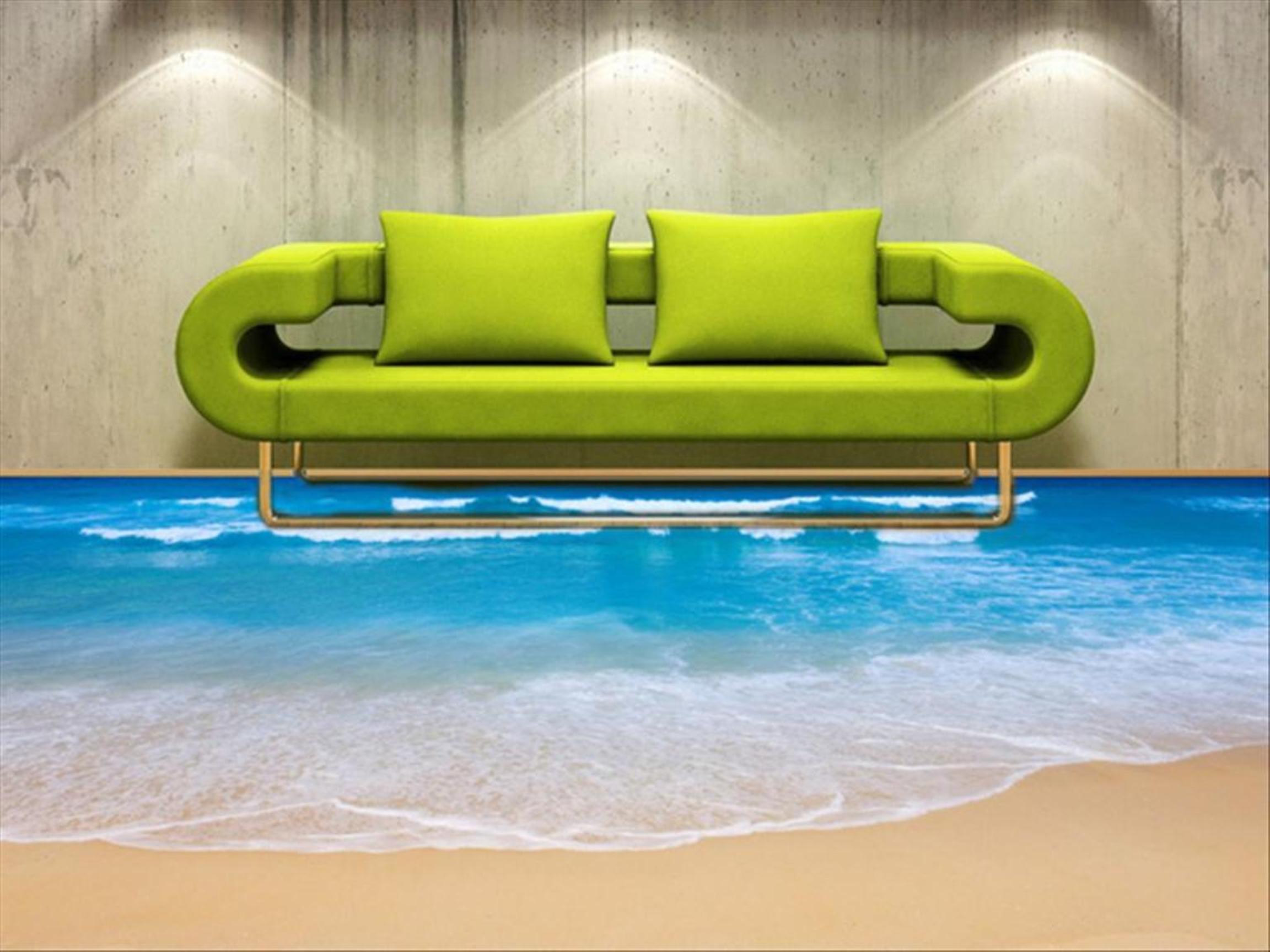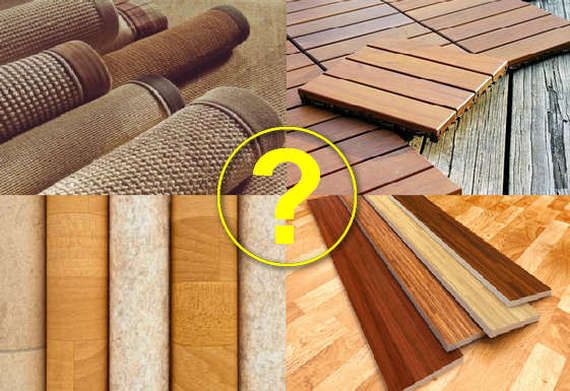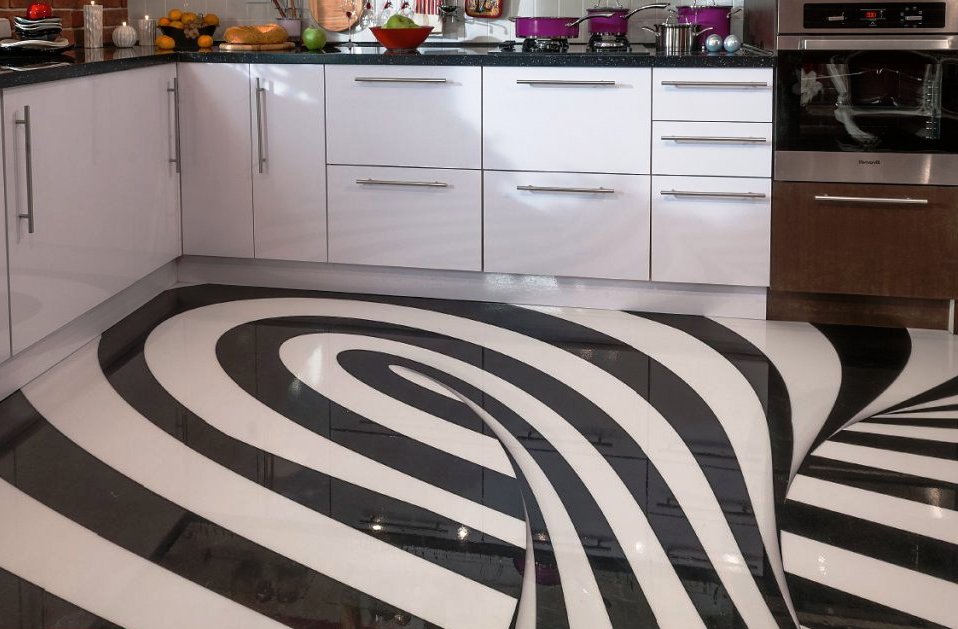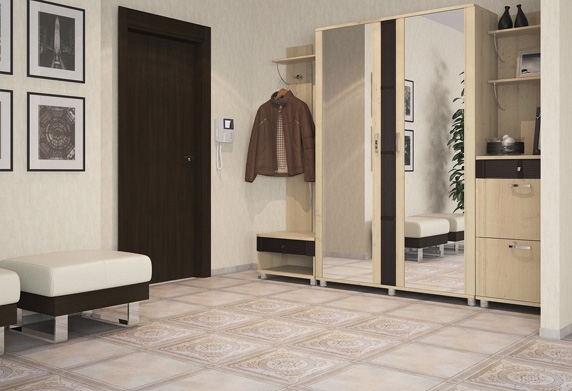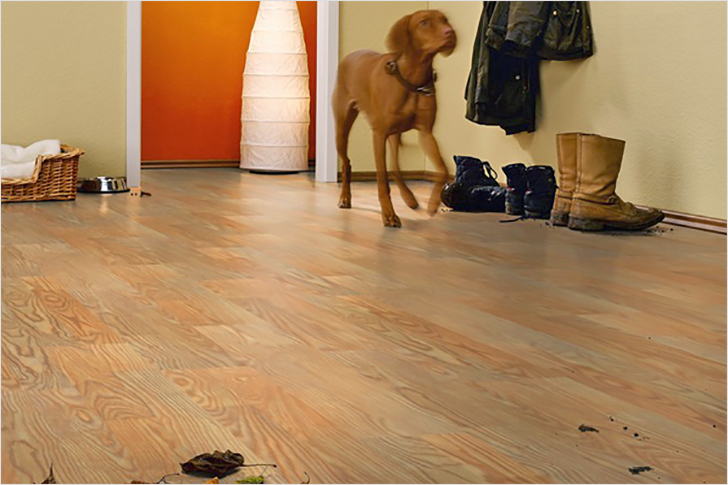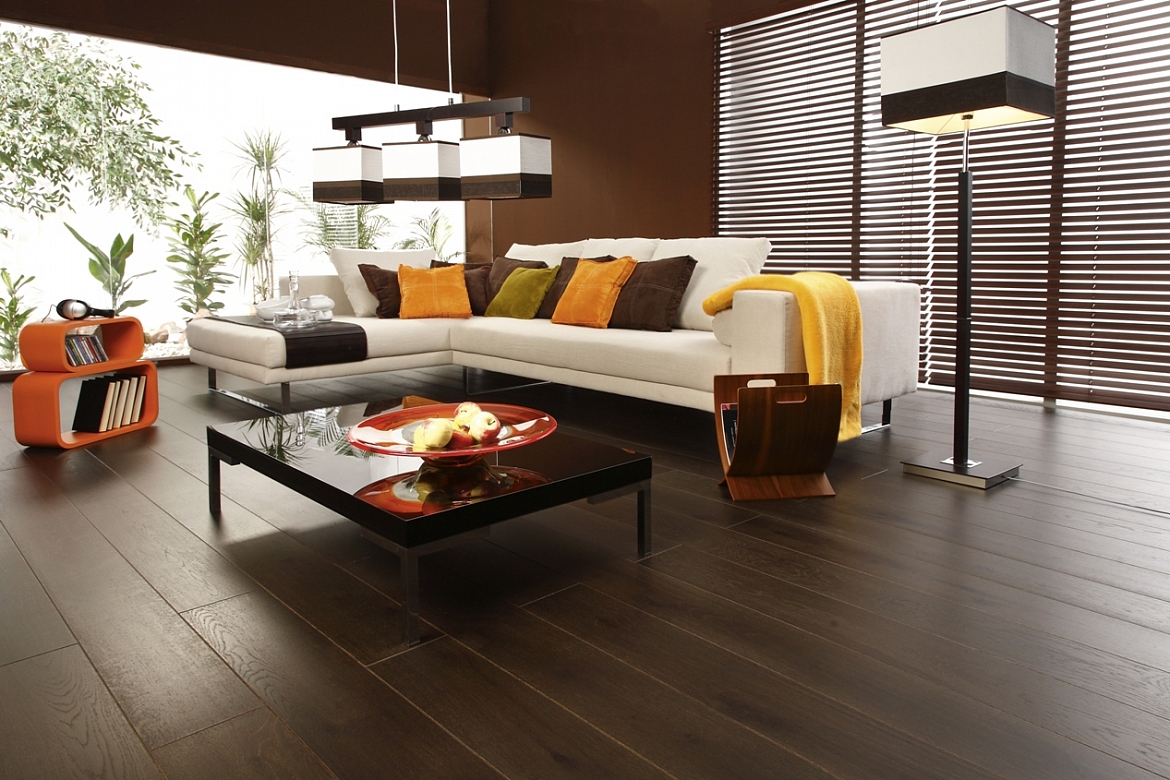Bulk floor for the garage: which is better to choose
Any car owner will confidently tell you that the most comfortable place for his iron horse will be in the garage, and this garage should be reliable and safe. Since a huge part of the load on itself is taken by the flooring, it is worth approaching its choice especially responsibly. There are many options, but one of the most suitable are bulk floors. Just note that this is not a budget solution, but such a coating is distinguished by record strength, resistance to moisture and mechanical stress, durability and attractive appearance. We understand the nuances of choosing a bulk floor for a garage and study the main types of this coating.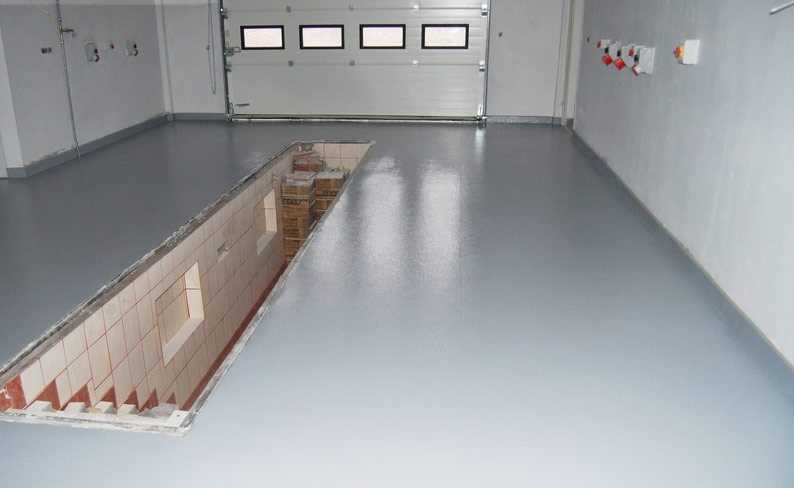
What should be the floor in the garage?
Claiming that bulk floor - this is almost an ideal solution for the garage, we do not want to be unfounded, therefore we list The basic requirements for flooring in this room:
- resistance to constant mechanical loads. A heavy car will constantly drive along the same trajectory, plus some store a rather heavy tool in the garage, which sometimes can also fall. The floor under these loads should not be covered with cracks and deform;
- resistance to temperature extremes and to low temperatures. Most garages are unheated rooms that warm up from time to time, because finishing materials have a hard time. The moisture that accumulates in the pores freezes under the influence of negative temperatures and can destructively affect the material. The flooring in the garage must withstand such effects;
- moisture resistance. Here, probably, no extra words are needed. On wheels and the car body, dirt and water enter the garage. Some in the garage and car wash, because the finish should be inert to the frequent effects of high humidity;
- fire resistance. In the room where gasoline, diesel and other flammable liquids are stored, the finish should be as resistant to fire as possible;
- resistance to aggressive chemicals. If you plan to use the garage not just as a parking place for a car, but also as a workshop, then you will surely work with automotive chemicals, and no one canceled the leaks, so it is better that the flooring can withstand such an impact;
- non-slip surface. If something spills onto the floor, it is very easy to slip, because the floor should not be absolutely smooth and glossy, but it should not be too embossed either, as this can complicate the cleaning process;
- easy care. There are many sources of dirt in the garage, and it is necessary to keep the room clean, therefore the floor covering should be as easy to clean as possible;
- aesthetics. Yes, the requirements for flooring in the garage are not as stringent as for residential premises, but still the material must be neat and not cause disgust.
Few coatings meet these requirements. Wood, for example, is afraid of temperature extremes, moisture, fire and chemistry. Concrete dusts over time, becoming an additional source of dirt. He shows himself well tile, but even better suited to the above description of the ideal floor material bulk floors.
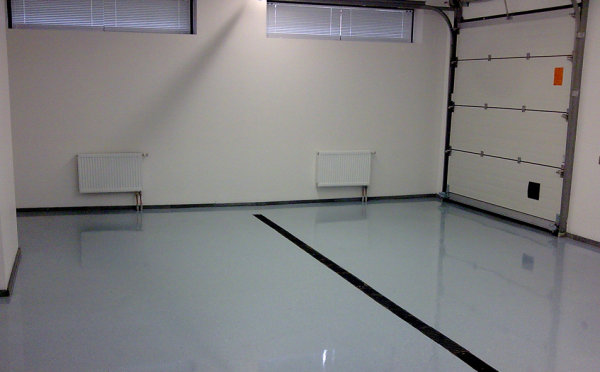
Garage floor
Advantages and disadvantages of bulk floors
Bulk floors are often referred to as self-leveling floors for foundation preparation, and decorative-finishing coatings, which are applied to an already prepared basis. This, of course, will be about the second type of compounds.
The properties of the coating largely depend on the composition of the self-leveling floors, but still common advantages are easy to highlight:
- seamless seamless surface. Even from the name of the coating it is easy to understand the installation technique of the material. The mixture is literally poured onto the surface, after which it sets. The finish coating does not have seams, which are considered the most vulnerable places of any finish;
- strength. Constant pressure and shock are not terrible for bulk floors. The coating is very difficult to scratch or deform;
- durability up to 40-50 years;
- moisture resistance. The bulk floor does not allow moisture to pass through, because the concrete base under it will be reliably protected. Even a layer of material with a thickness of 1.5 mm (for some types of mixture) will perfectly protect the base from water, oils and other spilled liquids;
- resistance to temperature extremes and low temperatures;
- easy care. The surface is not electrified, therefore dust and dirt will not stick to it, and all dirt can be easily removed with a broom and a damp cloth;
- fire resistance. The material does not ignite, does not burn, and when exposed to high temperatures does not emit toxic substances;
- good base adhesion;
- aesthetic appearance. Even the simplest solution, a monophonic bulk floor, will look aesthetically pleasing, and for the garage there is no other option. If you are a fan of non-standard solutions, then this type of coating allows you to turn the floor in the garage into a work of art - individual types allow you to use any picture under a layer of bulk floor. This can be an image of sea sand, pebbles, grass, etc.

No matter how I would like to call the bulk floor an ideal solution for the garage, it is impossible to do this, since it has some disadvantages:
- price. It would be strange if a coating with such properties would cost a penny. Bulk sex is not an expensive pleasure, but it should be considered as an investment. In the near future it will not be necessary to repair it, to be afraid that it will be damaged by moisture or frost, too. Own comfort and safety of the car are worth it, once and for a long time to spend money on finishing the garage;
- installation complexity. This applies, first of all, to the process of preparing the base, because it should be perfectly even, without cracks, potholes, and other defects;
- dismantling complexity. The coating is so strong and strong that it will not be easy to dismantle it. If the tile can be carefully removed and then reused, then with bulk floors this number will not work.
Depending on the composition of the self-leveling floor, its basic properties will also change, so it's time to familiarize yourself with the most suitable types of self-leveling floors for use in the garage.
Polyurethane bulk floor
As the name suggests, the basis of the mixture here is polyurethane. This substance has impressive elasticity and flexibility, and therefore the coating based on it will have excellent performance:
- resistance to constant mechanical loads, vibrations and shocks, increased wear resistance. Such floors have found application in shopping centers, enterprises, laboratories, pools, warehouses and, of course, in garages;
- resistance to many aggressive substances;
- elasticity helps to better withstand loads and prevents cracking;
- excellent indicators of heat and sound insulation;
- moisture resistance;
- hygiene and ease of cleaning;
- resistance to temperature extremes, frost resistance;
- the coating is difficult to damage, but even if you managed to do it, it is not difficult to get rid of scratches and other defects - it is enough to sand the damaged area and apply varnish;
- the ability to apply the composition to any surface: concrete, wood, metal.
In addition, the decoration is characterized by its original appearance. The surface can be matte or glossy. Of cons price, complexity of installation and dismantling, as well as a cold surface.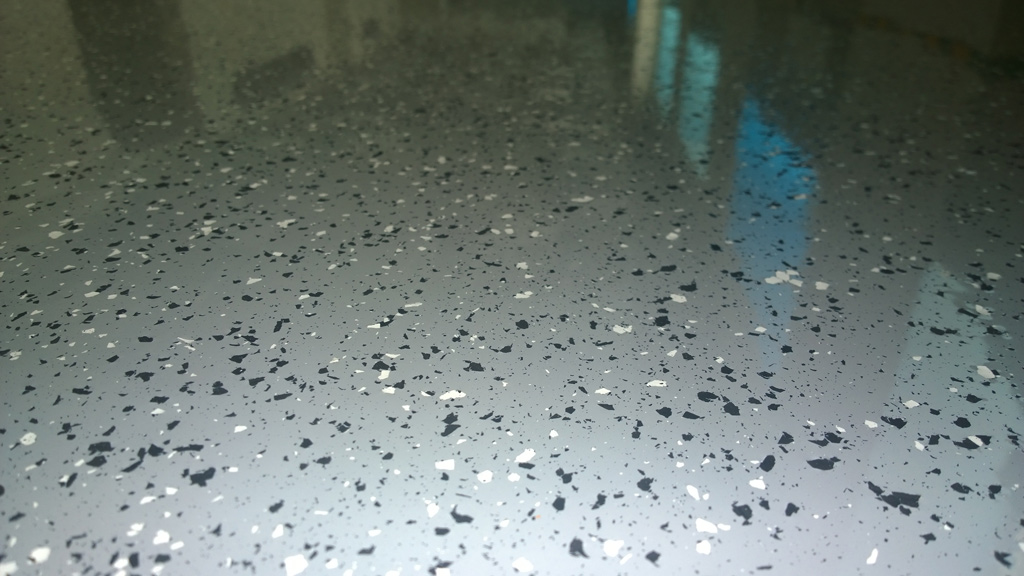
Epoxy bulk floors
The coating is made on the basis of epoxy resins, quartz sand, hardeners and other additives. The result is a harder coating than polyurethane, because it is not so resistant to shock loads. Nevertheless, epoxy bulk floors have found application in shopping centers, enterprises and garages. To their main benefits should include:
- excellent moisture resistance, higher than that of analogues, because this flooring is suitable for garages, where they will often wash the car;
- resistance to temperature changes, frost resistance;
- inertness to many aggressive substances;
- high level of resistance to abrasion;
- strength and durability.
Main minus - This is a low elasticity, because if it is planned to equip a workshop in the garage where heavy tools will be used (they have a risk of falling), it is better to choose a different finish option. Epoxy self-leveling floor will be an excellent solution for garages, where they will often wash cars, as well as for car washes. Among all bulk floors, epoxy is currently the most popular because of the excellent price-quality ratio.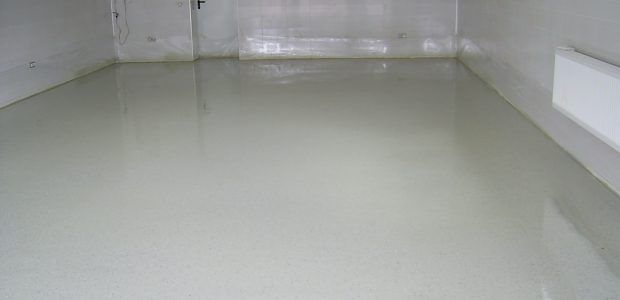
Epoxy-urethane bulk floors
If we combine the advantages of the two previous types of floors, we get epoxy-urethane compounds. They are widespread in the market due to the mass positive qualities:
- wear resistance and durability;
- excellent resistance to mechanical and shock loads;
- elasticity;
- moisture resistance, frost resistance and resistance to temperature extremes are so strong that the coating can be mounted on the street;
- resistance to aggressive chemicals.
Of cons only the price and installation difficulties can be noted.
Methyl methacrylate bulk floors
This composition can be considered the most budgetary, and in terms of basic characteristics it is not much worse than epoxy or polyurethane floors.
Benefits:
- record frost resistance, because it is a great option for unheated garages. In addition, the coating can be laid in the cold season;
- strength and abrasion resistance;
- moisture resistance;
- elasticity;
- high drying speed, allowing you to get the finished coating in a couple of hours.
disadvantages:
- difficulties during installation due to the excessively high curing rate of the material. It is important to correctly determine the layer thickness so that the coating retains its wear resistance and is not covered by cracks during operation;
- pungent smell during solidification, because this finish is only suitable for garages with a well-equipped ventilation system.

Cement-acrylic bulk floors
These are inexpensive formulations, which, however, are distinguished by excellent performance.
pros:
- resistance to mechanical stress;
- resistance to temperature extremes;
- durability;
- non-slip surface due to the presence of quartz sand, because this is an excellent coating option for a car wash or garage, where cars will often be washed;
- affordable price;
- relative ease of installation, which consists in the ability to fill a layer of 12 mm or more, which minimizes the preparatory work and does not correct some defects of the base. In addition, the composition has a high level of adhesion to the base.
Minuses:
- low resistance to aggressive substances;
- not the most attractive appearance.
Using various additives, manufacturers are trying to reduce these disadvantages to nothing, offering customers an excellent finish option in terms of value for money.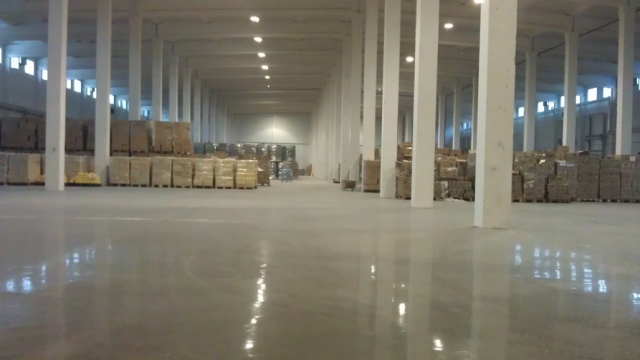
Installation of bulk floors in the garage
It is better to entrust the arrangement of bulk floors in the garage to professionals, because, not knowing all the nuances and lacking the necessary skills, you can just spoil the expensive material and secure a headache with dismantling the failed finish. However, even if you entrusted the installation to specialists, you yourself also need to know the principle of the work to be able to control the process and evaluate the quality of installation.
Installation of bulk floors in the garage takes place in the following stages:
- foundation preparation. For bulk floors, it is necessary to prepare a flat concrete base. If the base is already ready, it is necessary to clean it and eliminate possible irregularities. It is necessary to remove dust, glue and varnish residues, oil stains. If there are protruding areas on the surface, they must be sanded. Cracks are filled with repair compound and polished. The final stage is the grinding of the coating, which is necessary to eliminate the slightest bumps and prepare a rough base for better adhesion to the mixture. After this, a primer is applied. When working in an unheated garage, you must use damper tape. If the base is not very even, it is better to pre-prepare it using self-leveling self-leveling cement-based mixes, after which it will already be possible to proceed with the installation of the finish coating;

- mixture preparation. Each manufacturer encloses instructions for the preparation of the composition, and the procedure may vary slightly, but in general terms the process looks like this. In pure water (the volume is measured in advance in accordance with the manufacturer's recommendations), the mixture powder is added and mixed with a mixer or drill with the necessary nozzle. After this mixture, it may take time to brew a little. Some formulations after such rest require re-mixing. Too much mixture cannot be prepared right away, as it quickly solidifies, losing elasticity;

- fill. Start the filling process from the corner farthest from the entrance to the garage. The mixture is poured onto the floor in stripes, leveled with a spatula or squeegee, rolled with a needle rule so that air escapes from the composition. Each new portion is poured with an approach of 2-4 cm to the composition already on the floor. During installation, observe a small angle of inclination in the direction garage door. With floor sizes more than 3 * 6 m, arrangement of expansion joints is necessary. They are made a day after pouring the floor, and then filled with a mixture;
- decorative and protective coatings. For achievement of the best operational qualities the bulk floor can be varnished. Some experts recommend applying epoxy paint.
The layer of the bulk floor should not be too thick, otherwise it may become covered with microcracks. Pouring work is best done at a temperature of + 10 ... + 250C, drafts and direct sunlight are undesirable. Applying varnishes and paints is not necessary at all, but they will allow you to get a more durable and attractive coating.

